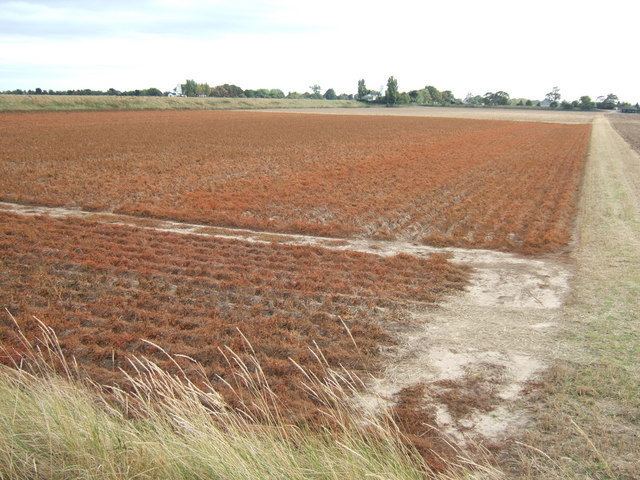 | ||
Pre-harvest crop desiccation (also siccation ) refers to the application of a herbicide to a crop shortly before harvest. Herbicides used include glyphosate, diquat and glufosinate. For potatoes, carfentrazone-ethyl is used. Other desiccants are cyanamide, cinidon-ethyl, and pyraflufen-ethyl. Uneven crop growth is a problem in northern climates during wet summers or when weed control is poor and several of advantages of desiccation have been cited: More even ripening is achieved and harvest can be conducted earlier; weed control is initiated for a future crop; earlier ripening allows for earlier replanting; desiccation reduces green material in the harvest putting less strain on harvesting machinery. Some crop may be mechanically destroyed when crop desiccation machinery moves through the field.
Contents
The application of glyphosate differs between countries significantly. It is commonly used in the UK where summers are wet and crops may ripen unevenly. Thus in the UK 78% of oilseed rape is desiccated before harvest, but only 4% in Germany.
Use
Pre-harvest desiccation is used in agriculture in crops including:
Glyphosate
Glyphosate is used as a pre-harvest herbicide and harvest aid on cereal crops including wheat and oats and on oil seed rape. As a systemic herbicide it is not a true desiccant as it can take weeks rather than days for the crop to die back after application. In the UK, it began to be applied to wheat crops in the 1980s to control perennial weeds such as common couch which was very effective and meant that sowing of the next crop could occur sooner. Use as a harvest aid in the UK increased after the introduction of strobilurin fungicides which prolong the longevity of the leaves. The timing of application is crucial as the moisture content of the grain must be below 30% for the yield of the crop to be unaffected and to minimise uptake of glyphosate by the grain. Yield may be affected and residues increased if applications are made to uneven fields in which some areas have a moisture content over 30%. Although used in weed-free and evenly maturing crops with the aim of reducing the grain moisture content more rapidly to hasten the harvest, there is little or no advantage in doing so. In 2002, 12% of UK wheat crops were treated, contributing to glyphosate being the second most common pesticide found on cereals in the UK appearing in 5-15 % of samples tested between 2000 and 2004, although never exceeding the Maximum Residue Level of 20 mg/kg. A survey of British wheat in 2006-8 found average levels of 0.05-0.22 mg/kg with maximum levels of 1.2 mg/kg. In July 2013 Austria banned the use of pre-harvest glyphosate citing the precautionary principle and in April 2015, an oat buyer in Western Canada, announced that it was refusing oats in which pre-harvest glyphosate had been used.
